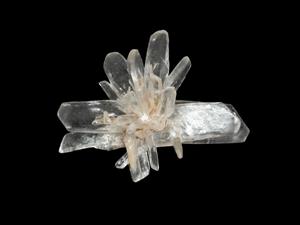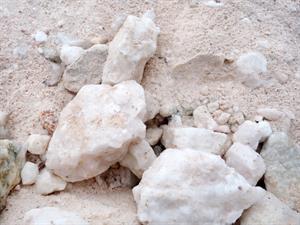PDF chapter test TRY NOW
Gypsum (), is found in several forms and is of great economic importance. It is the hydrated form of calcium sulfate, which is of great industrial importance. Its chemical name is calcium sulfate dihydrate.
 |
Gypsum crystal
Occurrence of gypsum:
The swordlike transparent selenite gypsum crystals, \(2m\) or more are often found at the Cave of Swords, Mexico. These are mostly found in sedimentary rocks along with minerals such as halite, borax, sulphur, calcite and dolomite.
These occur in extensive beds formed by the evaporation of ocean brine (highly concentrated salt solution). These are alteration products of sulfides in ore deposits and volcanic deposits.
Properties of Gypsum:
 |
Gypsum
It is colourless or white but is often tinted brown, grey, yellow, green, or orange due to impurities. It is moderately soluble in water, but when the temperature increases the solubility decreases. This character contradicts to other salts, as the solubility of calcium sulfate, , in water , is an exothermic process (liberation of heat takes place).
Gypsum Uses:
 |
- It is used in construction as wallboard, drywall, sheet rocks, or plasterboard.
- It is used in concrete blocks in building construction.
- It is used in Plaster ingredients.
- It is used as a binder in fast-dry tennis court clay.
- In making of dietary calcium as a source.
- It is a common ingredient in making mead (an alcoholic beverage created by fermenting honey with water).
- It is used in shampoos, foot creams and many hair products.
- They are used in mushroom cultivation to stop grains from getting clumped together.
